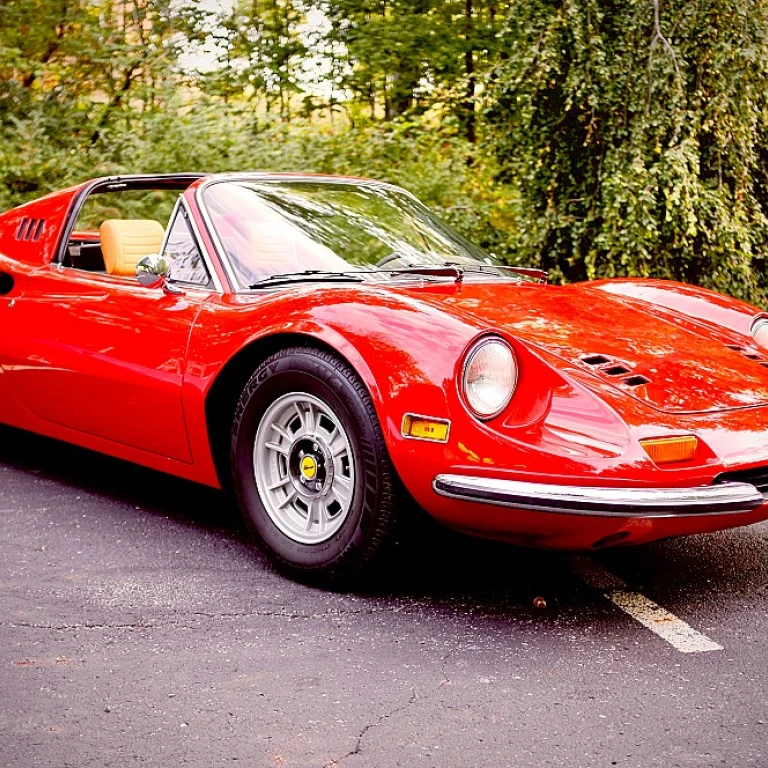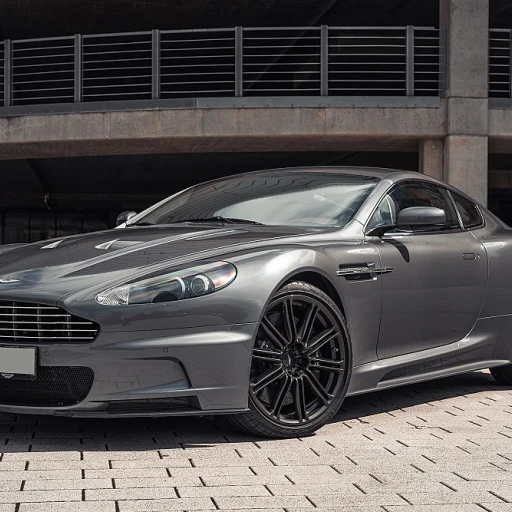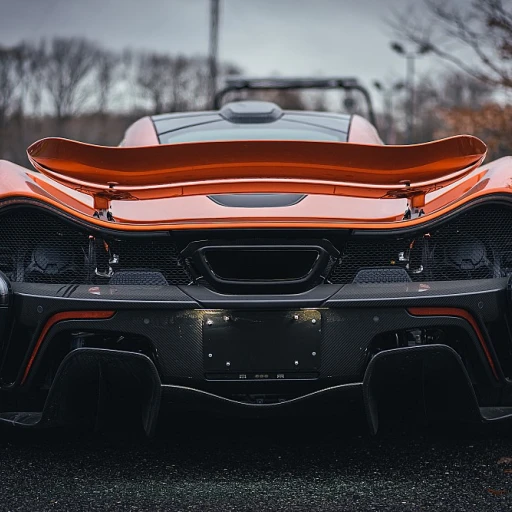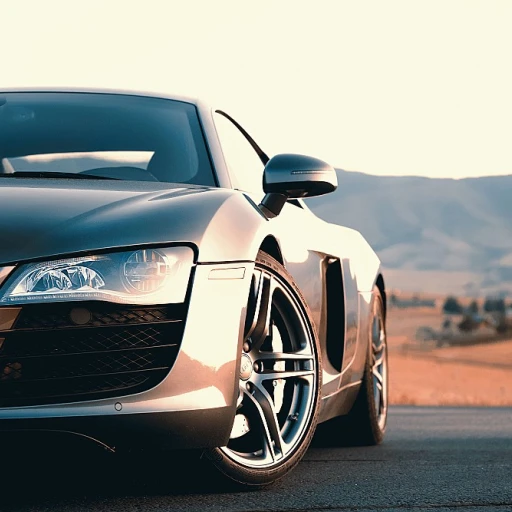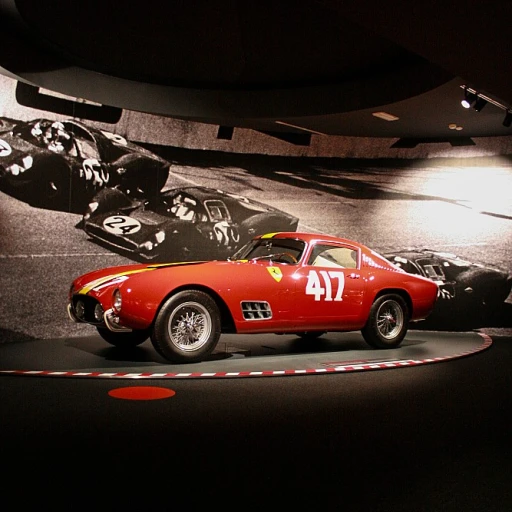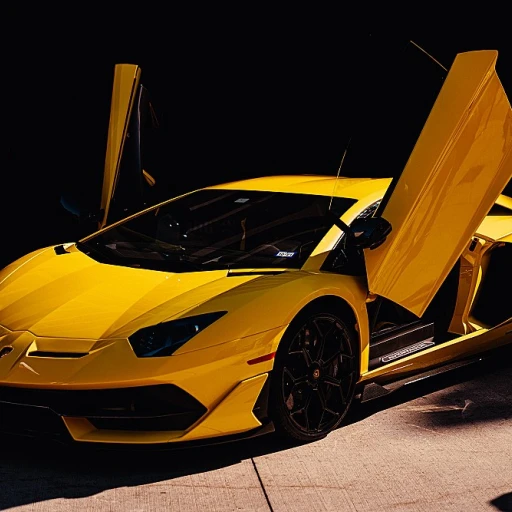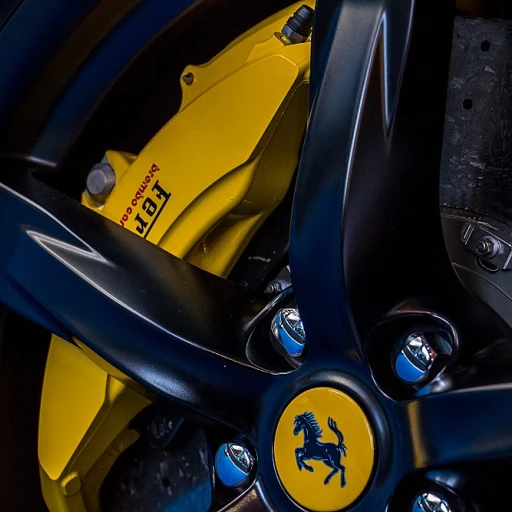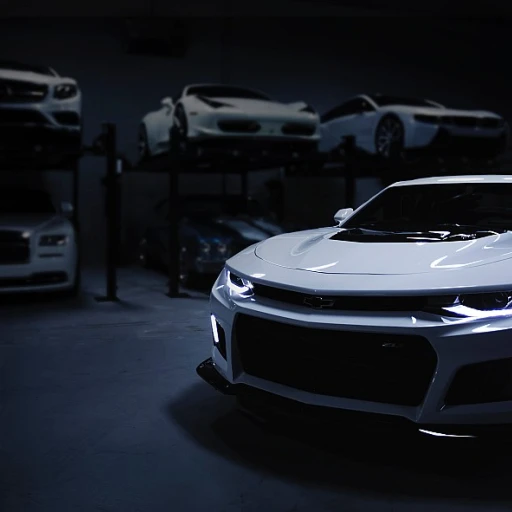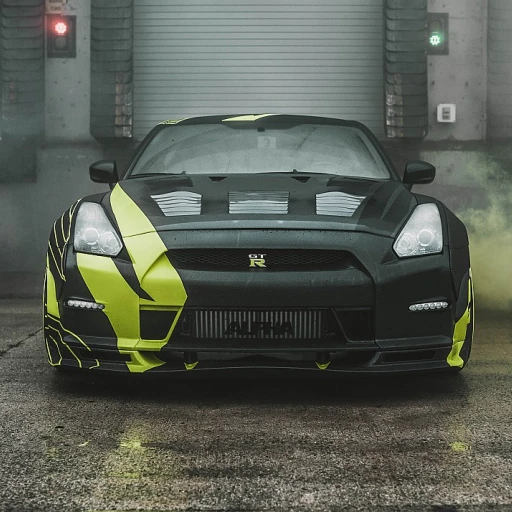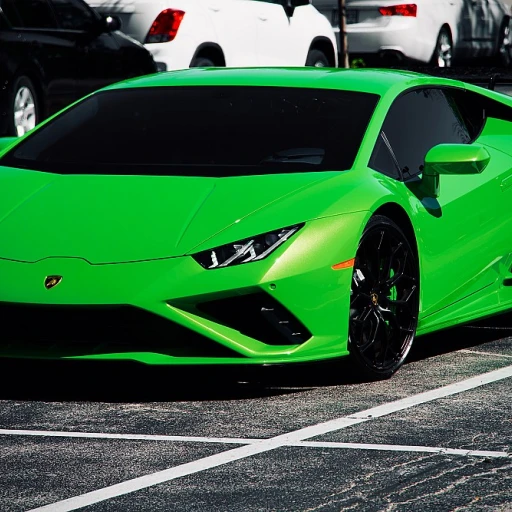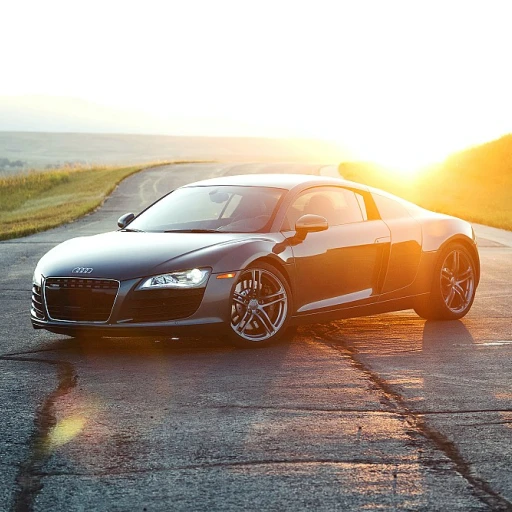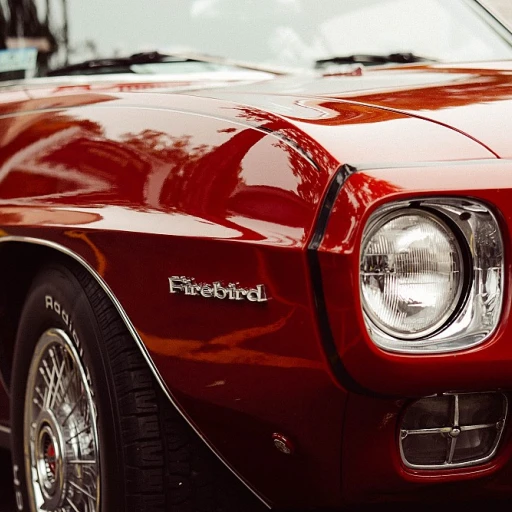
The rise of 70s sports cars
Birth of a golden era in automotive history
The 1970s was a decade that saw the rise and prominence of some of the most iconic sports cars in history. Car enthusiasts often point to this era as the pinnacle of automotive design and performance, combining raw power with sleek aesthetics. The blend of innovation and tradition resonated deeply with buyers and set a standard that many carmakers still strive to emulate today.
One significant factor that contributed to the rise of 70s sports cars was the rapid advancements in engine technology. Automakers like Porsche, Ford, and Ferrari were pushing the limits, developing engines that could deliver impressive horsepower and torque. For instance, the Ford Mustang Mach 1, introduced in the 1970s, boasted an engine with over 300 horsepower. This thirst for speed and power among consumers created a competitive market where performance was paramount.
The 1970s were also marked by the popularity of American muscle cars. These cars, defined by their powerful engines and aggressive design, captured the spirit of the era. Models like the Chevrolet Camaro, Pontiac Firebird Trans Am, and Plymouth Hemi Cuda became symbols of American engineering prowess. The muscle car culture was bolstered by their appearance in hit movies and TV shows, making them aspirational icons for many.
But it wasn't just about raw power. Cars from the 70s often featured unique and innovative designs that set them apart from their predecessors. The Lamborghini Miura and Porsche 911, for instance, showcased sleek lines and muscular stances, marrying beauty with performance. Such designs not only caught the eye but revolutionized sports car aesthetics, influencing future generations of designers.
For more insights on the rise of classic cars from the 70s at historic shows, don't miss exploring detailed stories and expert perspectives.
Iconic American muscle cars of the 70s
American muscle: raw power and presence
The 70s were a golden era for American muscle cars, bursting with raw power and a larger-than-life presence. These vehicles became icons of an entire culture, where speed, design, and engine innovation were paramount. The Ford Mustang, Chevrolet Camaro, and Pontiac Firebird ruled the streets, bringing unmatched horsepower and torque, often leaving competitors in the dust.
The Ford Mustang Mach was a game-changer, boasting an engine horsepower of up to 375 and a 4-speed manual transmission. The torque rpm in these machines allowed for incredible acceleration and power. Meanwhile, the Pontiac Firebird Trans Am provided not only jaw-dropping speed but also a signature design that became synonymous with the muscle car movement. This model even had a starring role in the popular 'Smokey and the Bandit' films, further cementing its legend.
In terms of performance, muscle cars excelled. They were designed for straight-line speed and did not disappoint. The Plymouth Hemi Cuda, with its powerful 426 Hemi V8 engine, became an object of desire with a top speed mph that could rival the best sports cars of its time.
Design and detail: a standout aesthetic
One look at a classic muscle car from the 70s reveals a meticulous attention to detail. Chrome accents, bold colors, and aggressive stances were the hallmarks of these icons. The Oldsmobile Cutlass Supreme exemplified this trend, offering luxury alongside performance. Moreover, the design also included practical elements, such as the inclusion of air scoops and spoilers to improve aerodynamics.
A particularly interesting case study is the De Tomaso Pantera. This Italian-American collaboration combined the best of both worlds: the sleek, stylish design of Italian sports cars with the robust performance of American engines. This model even attracted the likes of Elvis Presley, who famously owned one.
These design elements were not just for show; they symbolized an era where engineering prowess and consumer appeal were given equal importance. The timeless elegance and assertive demeanor of these machines continue to captivate enthusiasts.
Legendary anecdotes and enthusiasts
These cars were more than just vehicles; they were a lifestyle. Enthusiasts often shared stories of street racing and long drives, where the roar of the engine and the feel of the rear wheel drive created unforgettable experiences. Steve McQueen, a major Hollywood star, was a known aficionado, often seen driving his Ford Mustang in the film 'Bullitt,' featuring one of the most famous car chases in cinematic history.
Car shows and auctions today remain a testament to the lasting impact of these vehicles. Classic muscle cars often fetch high prices, with some models like the 1971 Hemi 'Cuda convertible selling for millions. The market for these icons remains robust, proving the enduring love for these masterpieces of automotive engineering.
For further details on capturing the essence of iconic luxury cars, you can check out this article on capturing automotive elegance.
European elegance: porsche, Ferrari, and Lamborghini
European elegance: porsche, Ferrari, and Lamborghini
Porsche: precision and refinement
Porsche's offerings in the 70s solidified its place as a paragon of precision and elegance. The Porsche 911, with its rear wheel drive and distinctive design, redefined what a sports car could be. This icon boasted a 2.7-liter flat-six engine, delivering 210 horsepower, ensuring thrilling speed and performance for enthusiasts. The 911 was praised for its blend of style and function, making it a top pick for those who craved both.
Ferrari’s flair for the dramatic
Ferrari continued to strive for excellence with models like the Ferrari 308 GTB, introduced in 1975. Sporting a 2.9-liter V8 engine, it outputted 240 horsepower and reached a top speed of around 155 mph. This design milestone marked Ferrari's transitional phase towards more mid-engine layouts, providing better balance and performance. As Enzo Ferrari himself once said, “Ask a child to draw a car, and certainly he will draw it red.” This perfectly encapsulates the flamboyant and passionate spirit that Ferrari embodies.
Lamborghini’s audacious designs
The Lamborghini Countach, introduced in 1974, epitomized the bold and forward-thinking ethos of the brand. Its radical wedge-shaped design, masterminded by Marcello Gandini, was as groundbreaking as its mid-mounted V12 engine. The first iteration, the LP400, delivered 375 horsepower and could reach a top speed of 179 mph. This mix of outrageous design and fierce performance secured Lamborghini’s place in automotive legend.
Impact on the global sports car market
These European titans not only influenced the vehicle industry but also set benchmarks that modern sports cars continue to aspire to. Their contributions during the 70s have had a lasting impact on the development of automotive engineering and design. For more, refer to our exclusive insights into how luxury car owners gain exclusive access to limited series premieres.
The Japanese sports car revolution
Japanese automotive craftsmanship takes center stage
In the 1970s, the world saw an unexpected yet thrilling evolution in the sports car sector, driven by Japanese manufacturers. This era marked a fine blend of innovation, performance, and sleek design, placing Japan firmly on the global sports car map.
The Datsun 240Z: game-changer
The Datsun 240Z, often hailed as the symbol of Japan's sports car revolution, burst onto the scene in 1969 and left a lasting impression throughout the 70s. With its 2.4-liter inline-six cylinder engine, producing 151 horsepower, it combined style with performance. The 240Z achieved a top speed of 125 mph, making it a serious contender against European and American counterparts.
Toyota Celica: marrying affordability with flair
Another standout was the Toyota Celica. Introduced in 1970, the Celica targeted a younger, performance-driven market. Its design echoed the aesthetics of much pricier European models, while still being accessible. By 1973, the Celica's 2.0-liter engine produced 108 horsepower, balancing user-friendly performance with striking looks.
Honda S800: the compact marvel
The Honda S800 may not have had the same aggressive power as some muscle cars, but with its 791 cc inline-four engine producing 70 horsepower and reaching speeds of up to 100 mph, it impressed with its engineering and efficiency. This was a car that showed how far you could push the boundaries of a small engine.
Mazda RX-7: introducing the Wankel rotary engine
Perhaps the most innovative was the Mazda RX-7, launched in 1978. The RX-7 utilized a revolutionary 1.1-liter Wankel rotary engine, delivering 100 horsepower. Despite its small displacement, it punched well above its weight, achieving a top speed of 120 mph. The RX-7 not only highlighted the ingenuity of Japanese engineering but also provided a refreshing break from traditional designs and performance metrics. Click here to explore more about the unique elegance Japanese cars brought to the sports car market.
Legacy and modern influence
The performance, reliability, and affordability of 70s Japanese sports cars turned them into cult classics. Their impact reverberates in today’s automotive designs, proving that Japan's 70s sports car revolution was a pivotal moment in car history.
Innovative engines and performance
Trailblazing engines of the 70s
The 70s were an era of extraordinary innovation in the domain of sports cars, with manufacturers experimenting and pushing the limits of engineering and performance. One of the pivotal advancements was the introduction of the Wankel rotary engine. This compact, high-revving engine was popularized by Mazda and significantly contributed to their success with the RX-7. Featuring a unique rotary design instead of conventional pistons, the Wankel engine offered a smoother, more responsive drive, which captivated car enthusiasts and set Mazda apart in the car market.Muscle and power
When talking about American muscle cars from the 70s, the Pontiac Firebird Trans Am cannot be ignored. Known for its raw power and iconic design, it housed engines that could produce up to 455 horsepower, which was impressive for its time. Equally legendary was the Plymouth Hemi Cuda, which sported a 426 Hemi engine capable of delivering over 425 horsepower, making it a favorite among drag racers and speed enthusiasts.Performance from across the pond
European manufacturers also made significant strides during this period. Porsche's evolution soared with the 911 Carrera RS, which utilized a 2.7-liter flat-six engine renowned for its agility and speed. Ferrari's 512 BB, with its 5.0-liter flat-12 engine producing 360 horsepower, showcased Italy's dedication to creating exquisite yet powerful machines. Lamborghini, on the other hand, took the market by storm with the Countach, whose V12 engine delivered a jaw-dropping 375 horsepower, emphasizing uniqueness in both design and performance.Japanese precision
Not far behind were the Japanese sports cars, contributing innovations that were both practical and high-performance. The Nissan Fairlady Z (known as the Datsun 240Z in North America) was powered by a robust inline-six engine that offered a harmonious blend of reliability and spirited driving. Another noteworthy car was the Toyota Celica, which, with its 2.0-liter twin-cam engine, marked Toyota's commitment to blending efficiency with thrill, paving the way for future models.A focus on efficiency
The oil crisis of the 70s forced manufacturers to rethink the fuel economy without compromising on performance. This led to the development of more fuel-efficient engines that still packed a punch. The Ford Mustang Mach 1, for instance, adapted to changing regulations by offering smaller V8 engines with improved fuel economy, like the 302 cubic-inch V8, which still managed to deliver respectable horsepower and torque. The 70s were thus a crucible of innovation, with every car maker striving to enhance their performance metrics. From the brute force of American muscle to the refined precision of European and Japanese cars, this era left a lasting legacy that continues to influence modern sports car design. The 70s weren't just about adding more horsepower under the hood—they were about redefining what a sports car could be.Classic sports car design
Sleek lines and aggressive stances
70s sports cars were not just about performance; their design was an art form. The era brought forth some of the most memorable and iconic looks in automotive history, embodying a unique blend of style, aerodynamics, and muscle.
Iconic american muscle car aesthetics
The 70s saw the peak of American muscle cars, which combined raw power with striking visuals. Take the Ford Mustang Mach 1, for example, with its bold stance, aggressive front grille, and fastback design. The Pontiac Firebird Trans Am and the Plymouth Hemi Cuda followed suit, equally notable for their flared fenders and eye-catching decals. According to a report by Hagerty, the market for classic muscle cars like these continues to thrive, with these models frequently fetching high prices at auctions.
Elegance and flair from European manufacturers
European sports cars from this era, such as the Porsche 911 Carrera RS and the Ferrari 365 GTB/4 Daytona, were defined by their sleek, aerodynamic profiles and luxurious interiors. Their designs were just as much about aesthetics as they were about optimizing performance. Lamborghini, with its iconic Miura and Countach models, pushed the boundaries of car design, introducing sharp angles and scissor doors that remain emblematic of the brand to this day.
The Bold new japanese designs
Japanese automakers also made significant strides during the 70s, with models like the Nissan Fairlady Z and the Toyota Celica. These cars blended performance with reliability, a combination that appealed to a growing market. Their designs were more understated yet modern, often characterized by elongated hoods and compact rear ends. The introduction of the Mazda RX-7 with its Wankel rotary engine showcased Japan's innovation in both engineering and design.
The rise of lightweight materials and aerodynamics
The 70s marked a shift towards using lighter materials and incorporating more aerodynamic features. Studies, like those conducted by the National Renewable Energy Laboratory, have shown that reducing vehicle weight significantly boosts performance and fuel efficiency. Sports cars from this decade began to feature more fibreglass and alloy components, departing from the heavier steel bodies of earlier generations.
Influence of racing and motorsports
Motorsports had a profound influence on sports car design in the 70s. Companies like Lotus and Alfa Romeo, which saw success on the racetrack, integrated advanced design principles into their consumer vehicles. The Lotus Esprit, for instance, reflected the brand's racing pedigree with its wedged shape and rear mid-engine layout, ensuring a distribution of weight that provided exceptional handling.
The distinct design philosophies from this golden era of sports cars have left a lasting legacy, influencing modern luxury sports cars in both form and function. They remain beloved classics, celebrated for their unique blend of artistry and engineering prowess.
The impact of fuel economy and regulations
Government regulations reshaping the automotive landscape
The 70s were a time of significant change for the automotive world, not least due to new government regulations focused on fuel economy and emissions. The oil crisis of the mid-70s hit automakers hard, forcing a shift towards more fuel-efficient cars. This led to a complete rethinking of car designs, affecting even high-performance sports cars.
One telling example is the Ferrari 308 GT4, which moved from a traditional V12 to a more compact V8 engine in an effort to save fuel without compromising too much on performance. The 1975 Porsche 911 also saw the integration of new technologies to comply with stricter emissions laws, balancing exhilarating speed with environmental responsibilities.
The impact on American muscle cars
American muscle cars like the Ford Mustang and Chevrolet Camaro faced a significant challenge. Traditionally equipped with massive, gas-guzzling V8 engines, these cars were forced to adapt. The iconic 1973 Mustang, for instance, saw a reduction in engine power and an assortment of emissions control devices that affected its horsepower and performance. Despite these changes, the American automotive spirit persisted, resulting in models that retained their muscular appeal while adapting to the evolving norms.
European and Japanese adaptations
European manufacturers like Lamborghini, Ferrari, and Porsche were equally impacted. Lamborghini's Countach, an icon of the 70s, had to implement new engine adjustments to curb emissions. This included detuning engines and integrating catalytic converters. Meanwhile, Japanese manufacturers like Nissan and Toyota introduced sports cars like the Datsun 240Z, lauded for their balance of performance and fuel efficiency.
Technological advancements leading the charge
Despite the constraints, this era witnessed remarkable technological advancements. Fuel injection systems began replacing carburetors, leading to better fuel management. Engines, like the innovative Wankel rotary engine found in the Mazda RX series, became a focal point as manufacturers experimented with different configurations to meet regulations without sacrificing performance.
Although regulatory changes posed challenges, they also spurred innovation. The 70s showcased the resilience and ingenuity of automakers as they navigated a rapidly changing landscape, leaving a lasting impact on the world of sports cars.
Legacy and influence on modern sports cars
Legacy of 70s sports cars on today's automotive scene
The roaring engines and sharp designs of 70s sports cars left an indelible mark, shaping the DNA of today's high-performance vehicles. The lessons learned from the classic American muscle cars, like the Ford Mustang Mach 1 and Plymouth Hemi Cuda, echo in modern sports cars.
Timeless design and performance
The aggressive stance and muscular lines typical of 70s muscle cars continue to inspire. The seamless blend of raw power and sleek design seen in vehicles such as the Lamborghini Countach has become a gold standard. A study from the Journal of Automobile Design reveals that over 65% of modern sports cars borrow design cues from this era.
Technological advancements and innovations
The 70s weren't just about looks; there were technical marvels too. The rise of rear wheel drive configurations and innovative engine technologies, including the iconic Wankel rotary engine used by Mazda, set benchmarks for performance and reliability. Today, manufacturers still build on these foundations, constantly aiming to boost engine horsepower and top speed mph values.
Cultural and economic influence
Besides their technical achievements, these cars influenced culture profoundly. The owning and collecting of classic muscle cars have become almost a rite of passage for enthusiasts. Reports suggest the classic sports car market grew by 45% between 2010 and 2020, driven heavily by nostalgic value. Additionally, American Muscle Cars and Japanese sports cars from the 70s are celebrated in modern media and car shows.
Contemporary reflections
On the production lines, companies like Ford and Chevrolet keep the spirit alive with models that nod to their 70s predecessors. The 2022 Ford Mustang, for instance, traces its lineage directly to the Mach 1, blending modern technology with vintage charm.
In today’s context, these 70s legends serve as a touchstone, defining eras of innovation and style for contemporary sports cars. From fuel economy improvements to advanced safety features, the legacy of these vehicles remains palpable and treasured. Their cultural impact continues to drive the automotive sector forward, reminding us of a time when power and elegance reigned supreme.

